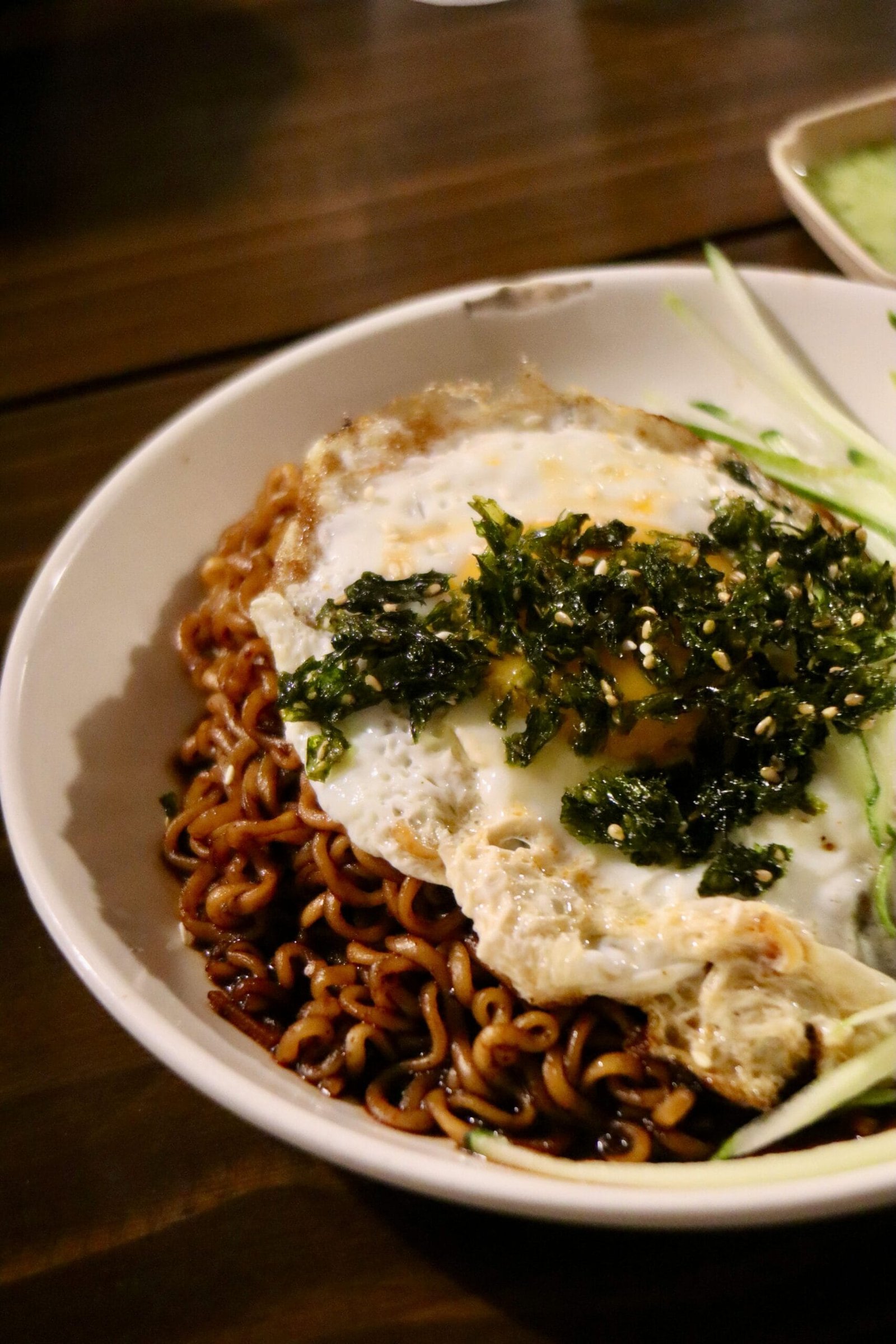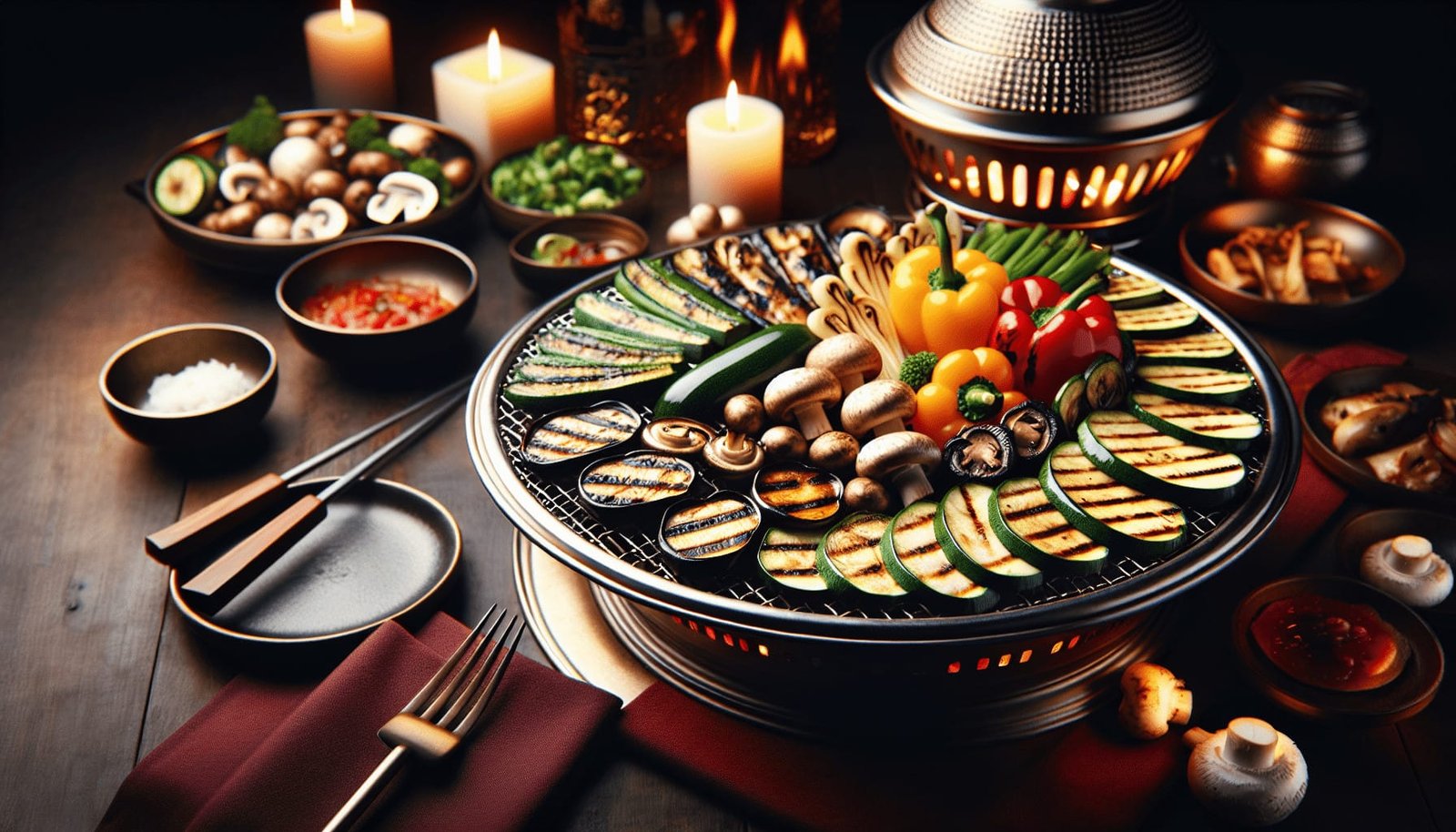Have you ever wondered how traditional Korean barbecue, with its sizzling meats and bold flavors, is being adapted to suit vegetarian preferences? For many, Korean barbecue might conjure images of marinated beef or sizzling pork belly cooked over an open flame. However, the principles of Korean cooking imagine a world where vegetarian dishes can be just as flavorful, innovative, and satisfying. In today’s gastronomic landscape, it’s possible to indulge in those smoky, spicy, and umami-filled flavors, all without sacrificing a vegetarian lifestyle.
Understanding Traditional Korean Barbecue Techniques
Korean barbecue is more than just a culinary tradition; it’s an experience that brings people together around a grill. The art of Korean barbecue lies in the preparation, cooking techniques, and community-driven dining style. Let’s delve into how these elements lay the foundation for adapting vegetarian options.
The Essentials of Korean Barbecue
The heart of Korean barbecue is the grill itself, traditionally set in the center of the table, allowing everyone to partake in the cooking process. This communal style is crucial to the experience. Meat is often marinated in a blend of soy sauce, garlic, sesame oil, and sugar, creating a savory-sweet harmony that enhances the natural flavors of the ingredients.
Cookware and Equipment
The key equipment includes a grill that evenly distributes heat and a variety of small, sharp knives for precise cutting. Having a table-top gas or charcoal grill is typical, maintaining control over cooking speed and flavor infusion. These tools are as applicable to vegetarian ingredients as they are to meat, making it easy to transition to vegetarian grilling.
A Focus on Marinades and Sauces
Marinades and sauces are the cornerstone of Korean barbecue flavors. They are designed to penetrate, tenderize, and infuse the food with complex tastes. Common flavors found in these include soy sauce, gochujang (Korean chili paste), and doenjang (fermented soybean paste). The essence of these marinades can be seamlessly applied to vegetables and proteins like tofu.

From Meat to Veg: The Transition Process
Transitioning from meat-based Korean barbecue to vegetarian options involves thoughtful substitutions that maintain the culinary joy of the original while introducing new textures and flavors.
Finding the Right Substitutes
Vegetarian Korean barbecue begins with effective substitutes for meat. Mushrooms like portobello and shiitake are excellent choices due to their umami profile and satisfying texture when grilled. Tofu and tempeh absorb marinades beautifully, offering a chewy, meaty bite that can mimic traditional proteins.
| Traditional Meat | Vegetarian Substitute |
|---|---|
| Beef | Portobello Mushrooms |
| Pork Belly | Firm Tofu or Tempeh |
| Chicken | Cauliflower or Eggplant |
| Lamb | King Oyster Mushrooms |
Techniques for Cooking Vegetables
When grilling vegetables, achieving the right texture is key. Quick high-heat grilling works well for vegetables like bell peppers and zucchini which cook fast and retain a pleasant crunch. For denser options like sweet potatoes or whole carrots, par-cooking may be necessary to ensure tenderness without compromising the smoky flavor achieved from the grill.
Creating Depth with Marinades
To enhance flavor, the use of traditional marinades is vital. When working with vegetables, consider creating variations in texture and flavor by employing both dry rubs and wet marinades. Pairing tofu with a spicy gochujang marinade, for instance, adds a kick of heat and layers of savory-sweet taste.

Experimenting with Beyond Traditional Ingredients
The beauty of blending traditional methods with vegetarian substitutes lies in the culinary creativity it allows. Beyond just replacing meats, there’s an exciting opportunity to incorporate and highlight diverse plant-based ingredients.
Utilizing Tofu, Tempeh, and Seitan
Rich in protein and with diverse textures, tofu, tempeh, and seitan are perfect for vegetarian Korean barbecue. Tofu acts as a sponge for flavor, absorbing marinades excellently, while tempeh offers a nutty taste that complements most spices. Seitan, with its meat-like consistency, can be particularly effective in mimicking textures traditionally provided by beef or pork.
Embracing Local Vegetables
Local and seasonal vegetables not only support sustainability, they also ensure freshness and optimal flavor. In fall, pumpkins and squash lend a sweet complement to spicy marinades; in spring, asparagus and snap peas can provide a lighter, more fragrant option for grilling.
Adding Fermented and Pickled Elements
A key component of Korean cuisine is the variety of side dishes, often fermented or pickled, adding brightness and acidity that contrast with the richness of grilled items. Kimchi, pickled cucumbers, and radishes can all enhance the overall dining experience, making each bite exciting and unique.

Tips for Vegetarian Korean Barbecue at Home
Setting up a vegetarian Korean barbecue at home can be both enjoyable and rewarding. With some preparation and creativity, you can replicate the communal and interactive nature of an authentic experience right in your living room.
Preparing Your Ingredients
Advance preparation is crucial. Cutting vegetables and protein replacements into uniform sizes ensures even grilling. Preparing marinades ahead of time not only simplifies the process but also intensifies the flavor as they have more time to penetrate the ingredients.
Setting Up Your Grill
Whether using a gas, charcoal, or electric grill, ensure it’s clean and pre-heated. Grills should be lightly oiled to prevent ingredients from sticking. Proper heat management will allow for a steady cook, rendering deliciously charred exteriors while maintaining juicy centers.
Creating an Authentic Dining Experience
Serve with an array of side dishes—banchan—and accoutrements like lettuce leaves for wrapping, ssamjang (a thick spicy paste), and fresh herbs. This not only transforms the meal into a pleasantly tactile experience but also honors the integrity of Korean barbecue dining.

Perfecting the Balance of Flavors
One of the hallmarks of Korean cuisine is its ability to balance flavors: sweet, sour, salty, bitter, and umami. This talk of taste is no less applicable when it comes to vegetarian Korean barbecue.
Sweet and Savory Harmony
Balancing sweet and savory elements can elevate vegetarian dishes. Using ingredients like honey, brown sugar, or mirin in marinades can add depth to otherwise neutral vegetables and proteins.
Adding Complexity with Spices and Herbs
Ginger, garlic, and chili add a punchy base note while fresh herbs like cilantro and mint offer brightness and contrast. Exploring beyond traditional Korean spices, such as experimenting with lemongrass or cumin, can introduce a global twist to the vegetarian barbecue.
Incorporating Texture for a Complete Experience
Consider pairing softer grilled ingredients with crunchy sides. Fried tofu, for instance, benefits from a juxtaposition with crispy fresh vegetables or nuts, amplifying the dining satisfaction through a range of textures.

Conclusion: A Vibrant Fusion of Tradition and Innovation
Adapting traditional Korean barbecue techniques for vegetarian options offers a thrilling culinary journey, bridging time-honored flavors with modern dietary choices. By thoughtfully incorporating vegetarian ingredients, infusing them with classic marinades, and embracing the grills’ transformative powers, you can create a meal that celebrates Korean traditions while welcoming an inclusive dining experience.
Korean barbecue, in its vegetarian form, is more than just a meal—it’s an evolution of a cultural cuisine that honors both the past and the present. Whether you are a seasoned vegetarian, a curious omnivore, or someone exploring global cuisines, vegetarian Korean barbecue promises a delightful and flavorful adventure. So, as you gather around the grill next time, consider the symphony of flavors you can create with plant-based ingredients and traditional Korean techniques.
